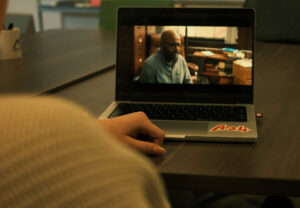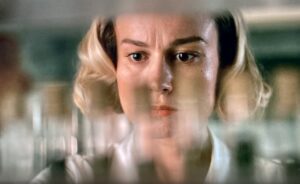If you have not watched Disney’s “Fantasia,” it’s about time you do. This two-hour film brings alive 15 of classical music’s most well-known scores with curious animation.
Disney animators and British conductor Leopold Stokowski collaboratively took new and old scores and mixed them with groundbreaking animation techniques. Deems Taylor narrates the film, introducing each piece and the creative process that went into its production.
Taylor introduces the first animation as “absolute music.” Similar to a creative exercise used in many elementary school art classes, the animation was drawn by artists who based their art on the images that passed through their minds as the music played.
The immersive experience begins with “Toccata And Fugue In D Minor, BWV 565,” with shots of the orchestra’s silhouettes in the frame. This eases the audience into the music before sending them into the animated world.
When compared to the others, the first animation takes a more abstract approach to the assignment. It opens the audience’s mind to a new realm of musically inspired possibilities. The audience is exposed to colors, shapes, and movements that fit remarkably well with the changing tone, speed and pitch of the music.
The film transitions from the abstract world of “Toccata and Fugue,” and Taylor’s familiar face pops up on screen. Surrounded by The Philadelphia Orchestra, he introduces the next series of animations, “The Nutcracker Suite.”
These animations bring the forest to life, inviting the viewer to imagine what magical creatures cause the natural processes of the environment.
Illuminated fairies pranced from leaf to leaf, turning them yellow, orange and red. Silly little mushrooms dancing in circles. Flowers turned into dancers with big ball gowns. The animations emit childish wonder and establish a creative, curious energy to the inner workings of nature.
The next animation takes a different approach to marrying visuals and music. Instead of drawing based on the music, the music was composed based on the animated story: “The Sorcerer’s Apprentice.”
This storyline introduces a familiar Disney character, Mickey Mouse, who is the sorcerer’s eager apprentice. Still lacking words, this animation contains a stronger storyline than the previous animations.
The story is sweet and cute. It reminds the audience that eagerness can lead to mishaps. Although it follows a storyline, the intentional combination of pictures in music is still prevalent, sparking emotion without relying on words. Disney takes a more educational approach with “The Rite of Passion.” Taylor explains that in its original form, it is a ballet that expresses primitive life. So, Disney decided to use it to tell the story of the beginning of life on Earth, as understood by science.
The animations for this part of the film are stunning, but it lacks the creative innovativeness seen in “The Nutcracker Suite” that makes it so special.
This brings us to intermission.
Coming out of intermission, the soundtrack is introduced. It is an animated line that produces different shapes, movements and colors as Taylor talks it through the different instruments that comprise the orchestra. This short and silly bit of the film introduces a new way of thinking about sound to the viewer.
“Every sound produces an equally beautiful picture,” says Taylor.
There is much more inviting and unique content to “Fantasia.”
The real experience comes from watching it. Turn off your phone, sit down in front of your TV or laptop, dim the lights and enjoy the breathtaking yet rejuvenating experience of Disney’s “Fantasia.”












